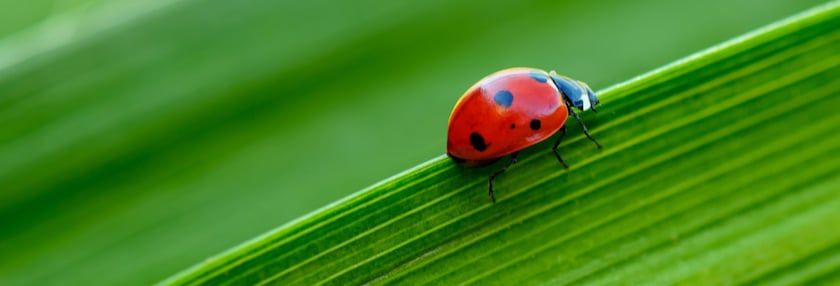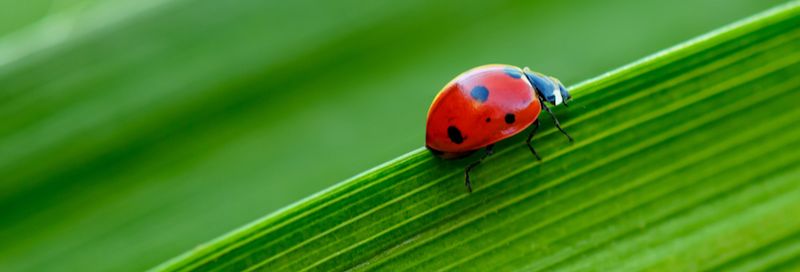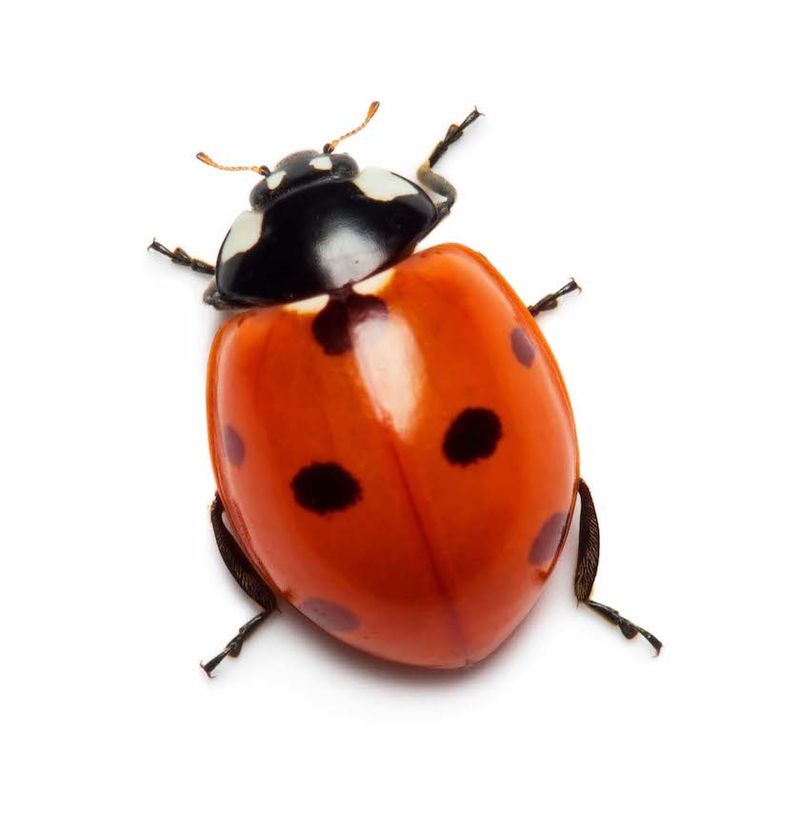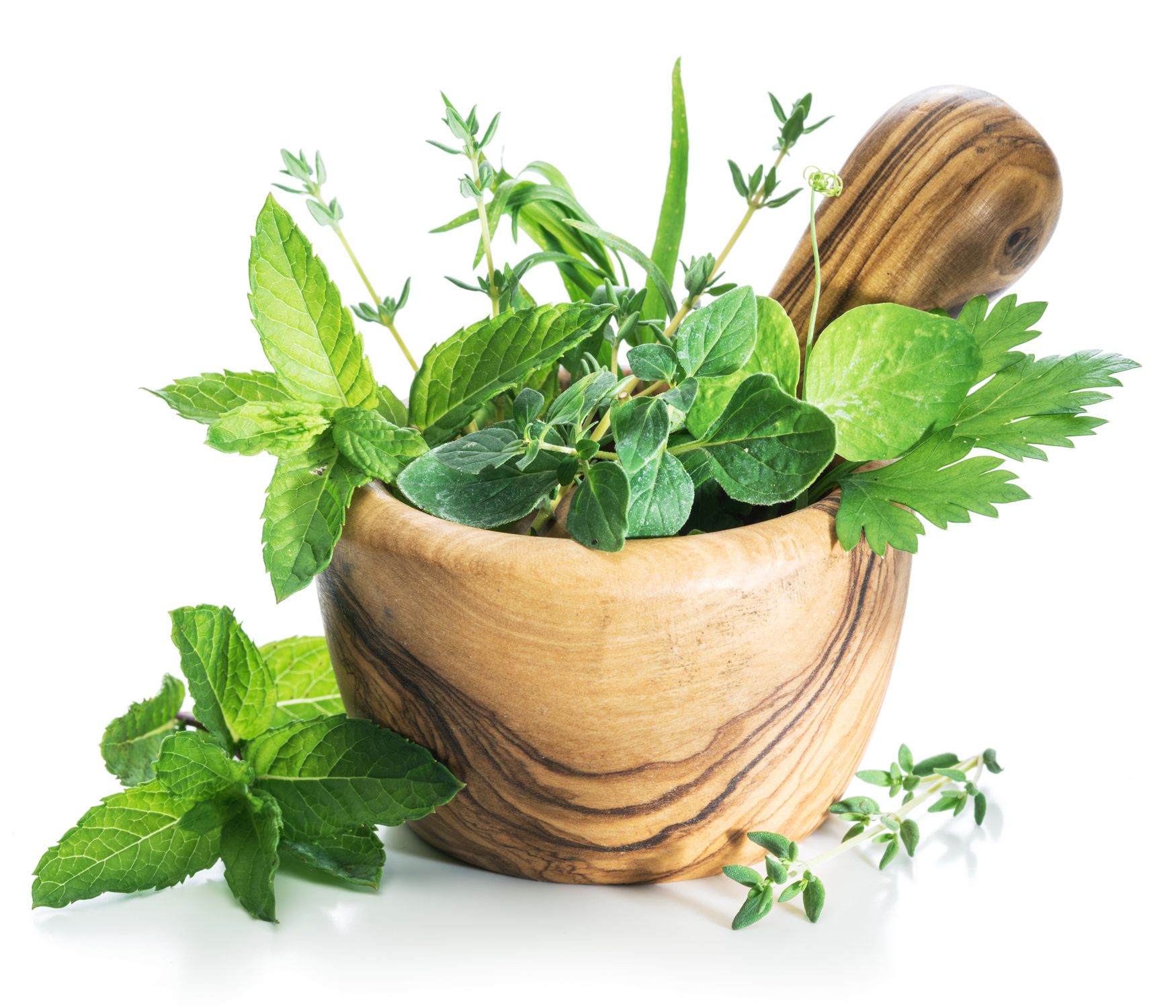The Lovely Ladybug


What’s orange and black and loved all over?
She flies into the garden and alights on a marigold blossom, carefully closing her red wings to reveal their iconic black spots. She’s a ladybug, and she’s here to help.

Let’s clarify one thing first … Ladybugs are beetles, and although the “ladybug” name is favored in the U.S., “ladybird beetles” or simply “lady beetles” are the more technically correct terms (ladybugs, alas, are not “bugs”).
But nomenclature aside, the main thing you need to know is that ladybugs eat aphids—lots and lots of aphids. This is a great thing because aphids can cause substantial damage to the new growth of your garden plants. If that weren’t bad enough, aphids may spread garden diseases as they munch from one plant to another. If aphids are troubling your garden, ladybugs may help.
Not all ladybugs are native to North America. One very common variety is actually an Asian beetle, first imported to the U.S. in the 1970s for pest control. It has since become highly populous and competes with native ladybugs for food sources.
Plus, in addition to aphids, ladybugs are also helpful at reducing the population of other bothersome garden pests, like mites, white flies, and scale insects. And they do all of this while rarely causing harm or annoyance to humans or livestock.
So how do you get these brilliantly beneficial creatures to hang out in your garden?
How to attract ladybugs to your garden
A cute sign on your garden gate—“Welcome, Ladybugs”—is a whimsical way to start, but you’ll want to consider more practical ways.
Ladybugs subsist on a diet of insects and plant pollen. If your garden is already overrun with aphids or other pests, you just need to focus on incorporating some of the ladybug’s favorite plants into your garden. Certain flowers, like marigolds and yarrow, are a great place to start, and ladybugs also appreciate many herbs, so consider planting dill, chives, calendula, and cilantro.
You can also attract ladybugs by supplying a ladybug “house”—a small birdhouse-like structure similar to a mason bee house. You can purchase ladybug houses or build one as an easy DIY project. A simple cedar box with narrow slots or bamboo sticks may offer shelter to ladybugs. A nearby water source is also important.

If you’re serious about encouraging ladybugs in your garden, consider skipping insecticides altogether. While the insecticide might allow you to eliminate unwanted pests, you may also be inadvertently eliminating your ladybugs at the same time.
May ladybugs congregate in your garden and the aphids flee! Happy gardening!
Love your beneficials
Ladybugs aren’t the only beneficial insects that can help in your garden. Other helpful species include:
- Mason bees
- Green lacewings
- Ground beetles
- Pirate bugs
- Praying mantis
- Spiders (not an insect, but a top predator!)
- Assassin bugs
Tags:Garden & Landscape

Acreage Life is part of the Catalyst Communications Network publication family.
















